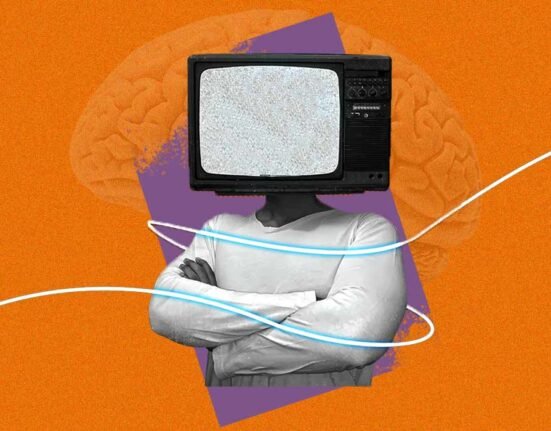To begin with, we can say that therapy or psychotherapy, talk therapy, is a part of mental health, a very crucial part even. In today’s world, where there is constant change, a pool of different opinions and increasing social media presence, we have also seen the rise of online therapy or pop-therapy. Often, therapy involves understanding ourselves more in depth. Our beliefs, relations, development, attachments, strengths, weaknesses, insecurities, coping mechanisms, and a lot more are often addressed with the help of curiosity and even nervous system healing, depending on the kind of therapy.
Now, for those of us who have been in therapy or taken it, we know it kind of filters the way we see ourselves as well as the world around us. For example, we might understand the nature of a friendship or relationship better, not take things personally, and even know how to interpret feedback and communicate better with people. This can also reshape the way we relate to people, even our closest dearest ones. This article then explores how therapy reshapes the way we relate to people
Read More: Misinformation in Your Feed: When Social Media Becomes a Mental Health Risk
What is therapy?
A little introduction to the main subject of the article before we go deeper. Therapy is a psychological therapy that helps treat and understand psychological disorders and even day-to-day problems with the help of verbal and psychological interventions (Mind, 2025). It is also commonly known as psychotherapy or talk therapy. Often, issues like anxiety, depression, addictions, life problems, and more can be understood and even resolved over time with the help of therapy.
Therapy and attachment style/pattern recognition
Therapy often helps to understand what attachment styles are and mainly what attachment style they have with their parents, family, friends, partner and others. Attachment styles were first introduced by Mary Ainsworth and later worked upon by John Bowlby. They both studied the impact that these attachment styles have in the way an individual communicates with others, their need for understanding and attention from others, as well as the effect of how these basic needs were met in their childhood on how they come up in adult relationships(MSEd, 2025h). Often in therapy, this can show up as transference or countertransference. Here, transference refers to when one projects their feelings about something or someone else onto their therapist (Fritscher, 2023b).

In the context of this article, post correction by the therapist regarding the same, a person can become a lot more self-aware about when they project their feelings or emotions on someone else. This means the way they now relate to people and their communication with them changes. In a way, for the better. Same way, recognising when someone else has done the same, it becomes easier to set boundaries and communicate the same.
With the help of therapy, a person recognises these attachment styles and the way their actions, thoughts, and behaviour correspond to them. For example, having a secure attachment type, an insecure anxious or insecure avoidance and so on can help make a person more self-aware of their behaviour, thoughts and communication patterns with others and people in general. It can also become easy for them to even spot these styles in other people, which ultimately reshapes the way they relate to them.
Read More: How Does a Child Develop Attachment Style?
Social learning through psychotherapy
The social learning theory was introduced by Albert Bandura, primarily revolving around the relation between observation and behaviour (MSEd, 2024m). This can be greatly used to understand the effect that therapy has on a person with respect to how they relate to people. Often, a very important term that comes up in therapy is setting boundaries for oneself. In the simplest terms, setting boundaries means understanding and reinforcing what one firstly expects from people, and what they will accept from them it also means setting personal boundaries such as your own limits in different aspects like work, education, friendships, relationships as to how much you can emotionally give and also what you expect to receive in return (Boundaries, 2025). The behaviours you will accept and those you can’t.
Read More: Empower Yourself: The Art of Setting Boundaries in Everyday Life
Emotional reshaping and the effect of a humanistic approach
It is fair to say that emotional regulation and emotional reshaping go very hand in hand. A major goal of therapy is emotional regulation. Emotional regulation means quite literally being more present and being more mindful(MSc, 2023). This can also be done by various nervous system healing techniques, along with proper professional guidance in therapy, like in CBT. In the long term, this can help in better interpersonal relationships, communication, lesser anxiety and depression and a lot more mental relief for overall better well-being. A human-centric speech in therapy can help with emotional regulation as it focuses on free will, self-efficacy and self-actualisation(MSEd, 2024j)
This, all in all, when mastered and incorporated in daily life, can lead to us regulating our emotions better, which means if we meet an unregulated person, we can recognise it and also relate differently to them than before. An overall emotional development leading to a reshaping in totality.
Read More: How do I know I need Therapy?: Psychologist Speaks
Conclusion
To conclude, this article explores how therapy can lead to overall emotional development that finally leads to an emotional reshaping of how we relate to others. Psychological concepts like understanding your attachment styles can help understand how one heavily communicates and acts, which can lead to them being able to spot people who may have a similar or different style and accordingly communicate with them and relate to them.
Followed by social learning, where one understands how to set boundaries better, which means relating differently to someone who follows them or does not follow them. Finally emotional regulation and development bing major part that affects how we view ourselves as well as how we relate to to others, in a nutshell stronger the boundaries it can lead to better communication and relating to someone in a way that still keeps our self-respect and boundaries in tact, these are a few whats in what therapy can result in us emotionally reshaping the way we relate to others.
Read More: Humanistic therapy: process, uses, types, and advantages
FAQs
1. What effect does therapy have on self-awareness?
For example, having a secure attachment type, an insecure anxious or insecure avoidance and so on can help make a person more self-aware of their behaviour, thoughts and communication patterns with others and people in general. It can also become easy for them to even spot these styles in other people, which ultimately reshapes the way they relate to them.
2. Do emotionally regulated people relate differently to others?
In the long term, this can help in better interpersonal relationships, communication, lesser anxiety and depression and a lot more mental relief for overall better well-being. A human-centric speech in therapy can help with emotional regulation as it focuses on free will, self-efficacy and self-actualisation(MSEd, 2024j). This, all in all, when mastered and incorporated in daily life, can lead to us regulating our emotions better, which means if we meet an unregulated person, we can recognise it and also relate differently to them than before. An overall emotional development leading to a reshaping in totality.
3. How does having stronger boundaries alter the way we communicate?
In the simplest terms setting boundaries means understanding and reinforcing what one firstly expects from people, and what they will accept from them it also means setting personal boundaries such as your own limits in different aspects like work, education, friendships, relationships as to how much g]you can emotionally give and also what you expect to receive in return (Boundaries, 2025). The behaviours you will accept and those you can’t..
References +
Mind, T. V. (2025, January 13). Therapy. Verywell Mind https://www.verywellmind.com/therapy-7092217
MSEd, K. C. (2025g, January 29). What is attachment theory? Verywell Mind. https://www.verywellmind.com/what-is-attachment-theory-2795337
Fritscher, L. (2023, December 19). What is transference, and how does it work? Verywell Mind. https://www.verywellmind.com/transference-2671660
MSEd, K. C. (2024m, July 16). How social learning theory works. Verywell Mind. https://www.verywellmind.com/social-learning-theory-2795074
Boundaries. (2025, April 21). Psychology Today. https://www.psychologytoday.com/us/basics/boundaries
MSEd, K. C. (2024j, July 16). How humanistic Psychology can help you live a Better life. Verywell Mind. https://www.verywellmind.com/what-is-humanistic-psychology-2795242
MSc, O. G. (2023, December 13). Emotion regulation. Simply Psychology. https://www.simplypsychology.org/emotional-regulation.html













Leave feedback about this